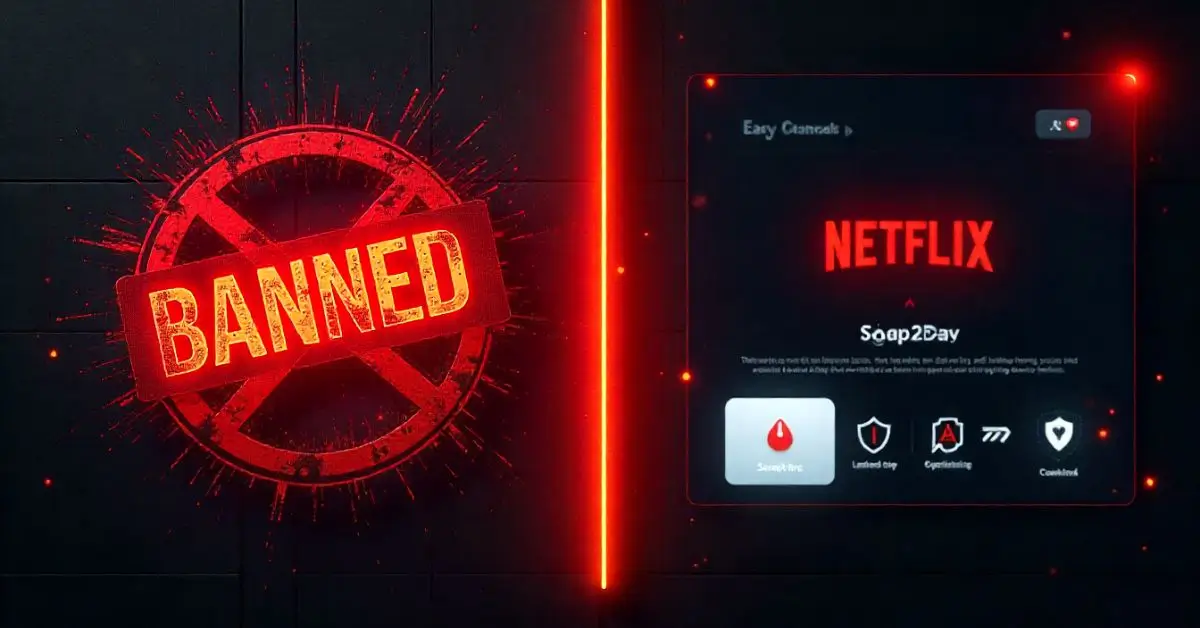SOFTWARE & AI
Managing Complexity: The Benefits of a Unified Platform for IT Teams

In today’s technology-driven world, IT teams face increasingly complex challenges. From managing disparate systems to ensuring robust cybersecurity protocols, the demands on IT departments can be overwhelming. This complexity often results in inefficiencies, miscommunication, and increased operational risks. A unified platform can significantly alleviate these burdens, providing a centralized solution that streamlines processes and enhances collaboration. By consolidating tools and resources, IT teams can focus more on innovation rather than routine maintenance. In this article, we will explore the numerous benefits of adopting a unified platform for IT teams and how it helps navigate the complexities of modern IT environments.

Streamlined Communication
Effective communication is at the heart of any successful IT operation. A unified platform enhances communication among team members, fostering collaboration. With integrated tools such as chat applications, video conferencing, and project management software, the need to switch between various applications is minimized. This seamless integration means that teams can communicate in real-time without the distraction of hopping between different interfaces. By utilizing a consolidated solution like GTT’s website, IT teams can share information rapidly and respond to issues more effectively. This cohesive approach not only accelerates project timelines but also reduces the potential for miscommunication. Furthermore, standardized communication channels allow for better documentation of conversations and decisions, ensuring accountability.
Enhanced Collaboration
Collaboration is crucial for IT teams, particularly when tackling complex projects that require input from various experts. A unified platform provides shared workspaces where team members can collaborate on documents and projects in real time. This immediate access to shared resources promotes synergy and enhances the team’s ability to innovate. Features such as task assignments and tracking can streamline workflow management. As teams work together more effectively, they can foster creativity and generate solutions more quickly. Enhanced collaboration translates to a collective problem-solving approach, which is essential when facing intricate challenges. Regular feedback loops and brainstorming sessions become simpler, paving the way for innovative solutions that might otherwise remain unrecognized.
Increased Efficiency
Time is a valuable asset in the world of IT, and any opportunity to increase efficiency should be embraced. By utilizing a unified platform, IT teams can reduce redundancies that slow down operations. For instance, repetitive tasks can be automated, allowing staff to dedicate more time to strategic initiatives. The integration of various IT functions into a single platform results in less time spent on administrative tasks. Real-time monitoring tools give managers the ability to identify areas of improvement and streamline processes effectively. Enhanced analytics capabilities make performance tracking more straightforward, enabling teams to pivot strategies as necessary. Increased efficiency empowers IT departments to deliver projects on time while maintaining a high standard of quality. This efficiency not only benefits the internal team dynamics but also enhances service delivery to end-users.
Improved Security
Cybersecurity remains a significant concern for IT teams, as breaches can result in severe consequences. A unified platform often comes equipped with advanced security measures, ensuring that sensitive data remains protected. With a centralized approach to managing IT assets, monitoring potential risks becomes more straightforward. This consolidated visibility allows for quicker identification of vulnerabilities and the implementation of corrective measures. Moreover, a unified platform can enforce consistent security policies across all systems, reducing the likelihood of human error. Regular updates and patches can also be handled more efficiently, ensuring that all systems are fortified against emerging threats. By prioritizing strong security frameworks within a unified platform, IT teams can instill confidence in their stakeholders and safeguard organizational assets.
Cost Savings
Implementing a unified platform can lead to substantial cost savings for organizations. By reducing the number of disparate systems and tools required for daily operations, businesses can minimize software licensing costs. Consolidation not only helps to lower overhead but also reduces the training burden on staff as they navigate fewer applications. Increased efficiency and streamlined workflows ultimately lead to higher productivity, translating into a better return on investment. Additionally, a unified platform can enhance customer satisfaction, resulting in increased sales and revenue. Reducing the complexity of IT operations allows for more effective resource allocation and strategic planning. These cost benefits can empower organizations to invest more in innovation and growth rather than allocating a budget to managing multiple tools.
Scalability and Flexibility
Finally, a unified platform offers scalability which is crucial for organizations aiming for growth. As businesses evolve, their IT needs change. A unified platform can adapt to these needs, allowing organizations to scale operations without significant disruptions. Implementing new features or expanding user access can be accomplished quickly and efficiently. Additionally, this flexibility ensures that IT teams can respond to emerging technological trends and market demands. As a result, organizations can remain competitive in their respective industries. The ability to swiftly adjust functionalities according to project requirements or business objectives strengthens the overall resilience of the IT department.

In summary, adopting a unified platform brings significant advantages to IT teams navigating complex environments. Effective communication, enhanced collaboration, increased efficiency, improved security, cost savings, and scalability are all notable benefits. By consolidating tools and resources, organizations can position themselves for success, while their IT departments can focus on strategic innovation. Embracing a unified approach fosters a proactive environment that empowers teams to tackle challenges head-on and drive continuous improvement.
SOFTWARE & AI
Is Soap2Day Banned? What You Need to Know

Soap2Day was once a go-to platform for streaming movies and TV shows, but its legal status has been a hot topic. If you’re wondering, is Soap2Day banned?, the answer isn’t straightforward. This article dives deep into the platform’s current status, legality, risks, and safer alternatives—helping you make an informed decision.
The Rise and Fall of Soap2Day
Soap2Day gained popularity as a free streaming site, offering a vast library of movies and TV shows without requiring subscriptions. However, its legality was always questionable since it hosted copyrighted content without proper licensing. Authorities and copyright holders eventually cracked down, leading to its shutdown in 2023.
Despite its closure, mirror sites and copycats still operate, posing risks to users. Understanding why Soap2Day was banned and the dangers of using such platforms is crucial for safe streaming.
Is Soap2Day Banned Officially?
Yes, the original Soap2Day domain was banned and taken offline following legal actions. The site violated copyright laws by distributing pirated content, leading to its termination. However, several clone sites have emerged, falsely claiming to be Soap2Day. These mirrors often carry the same risks—malware, phishing scams, and legal consequences.
Why Was Soap2Day Shut Down?
Copyright Infringement – The site hosted movies and shows without permission from studios or distributors.
Legal Pressure – Industry coalitions and government agencies targeted Soap2Day for facilitating piracy.
Lack of Revenue Sharing – Unlike legitimate platforms, Soap2Day did not compensate content creators.
Using such sites now could expose you to legal trouble, as authorities actively monitor illegal streaming platforms.
Risks of Using Soap2Day or Its Alternatives
Even if you find a working Soap2Day mirror, the risks far outweigh the benefits:
Malware & Viruses – Unofficial streaming sites often contain malicious ads or downloads.
Data Theft – Hackers may steal personal information through phishing schemes.
Legal Consequences – Some countries impose fines or penalties for accessing pirated content.
Poor Streaming Quality – Unlike licensed platforms, these sites offer unreliable playback.
Comparison: Soap2Day vs. Legal Streaming Platforms
| Feature | Soap2Day (Unofficial) | Legal Platforms (Netflix, Hulu) |
|---|---|---|
| Cost | Free | Subscription-based |
| Content Quality | Low resolution, buffering | HD/4K, smooth streaming |
| Safety | High risk of malware | Secure, encrypted connections |
| Legal Status | Banned, illegal | Fully licensed and compliant |
| User Experience | Pop-up ads, redirects | Ad-free, user-friendly interfaces |
Safe and Legal Alternatives to Soap2Day
Instead of risking security and legality, consider these legitimate streaming services:
Netflix – Offers a vast library of movies, shows, and originals.
Hulu – Great for TV series and next-day network episodes.
Amazon Prime Video – Includes exclusive content and rentals.
Disney+ – The best choice for Disney, Marvel, and Star Wars fans.
Tubi – A free, ad-supported platform with licensed content.
These platforms ensure high-quality streaming while supporting creators legally.
How to Protect Yourself When Streaming Online
If you’re tempted to use sites like Soap2Day, follow these precautions:
Use a VPN – Helps mask your activity but doesn’t make piracy legal.
Install Antivirus Software – Protects against malware from shady sites.
Avoid Clicking Suspicious Ads – Many fake streaming sites contain phishing links.
Stick to Reputable Platforms – Prevents exposure to legal and security risks.
The Future of Free Streaming Sites
As enforcement against piracy tightens, more illegal streaming sites will likely face bans. While free access is appealing, the dangers of malware, data theft, and legal issues make legal alternatives the smarter choice.
Conclusion
Is Soap2Day banned? Yes, the original site is gone, but imitators remain. However, using them is risky and unethical. Legal streaming services provide better quality, security, and peace of mind. By choosing licensed platforms, you support content creators while enjoying a seamless viewing experience.
FAQs
Is Soap2Day completely shut down?
The original Soap2Day domain was shut down in 2023 due to legal actions. However, copycat sites still exist, though they carry significant risks.
Can I get in trouble for using Soap2Day?
Yes, accessing pirated content is illegal in many countries and could result in fines or legal notices from your ISP.
Are there any safe free streaming sites?
Tubi, Crackle, and Pluto TV offer free, legal streaming with ads. Avoid unauthorized sites to protect your data and device.
Why do Soap2Day mirrors still exist?
Scammers create fake sites to exploit users with malware or ads. These mirrors have no affiliation with the original (now defunct) Soap2Day.
Does a VPN make Soap2Day safe to use?
A VPN hides your activity but doesn’t legalize piracy. You still risk malware and poor streaming quality on illegal sites.
What’s the best alternative to Soap2Day?
Paid services like Netflix and Hulu are the safest, but free legal options like Tubi provide a good alternative without risks.
SOFTWARE & AI
Joi Data Base: The Ultimate Solution for Modern Data Management

In today’s data-driven world, a Joi data base stands out as a powerful tool for organizing, storing, and retrieving information efficiently. Whether you’re a developer, business owner, or data analyst, understanding how a Joi data base works can transform the way you handle data. This article explores its features, benefits, and how it compares to other solutions—ensuring you make an informed decision for your needs.
What Is a Joi Data Base?
A Joi data base is a structured system designed to manage large volumes of data with precision and speed. Unlike traditional databases, it emphasizes schema validation, ensuring data integrity while maintaining flexibility. This makes it ideal for applications where accuracy and scalability are critical.
Key Features of a Joi Data Base
Schema Validation – Ensures data adheres to predefined rules, reducing errors.
Scalability – Handles growing datasets without compromising performance.
Ease of Integration – Works seamlessly with various programming languages and frameworks.
Security – Implements robust encryption and access controls.
Performance Optimization – Delivers fast query responses even under heavy loads.
Why Choose a Joi Data Base?
Businesses and developers prefer a Joi data base for its reliability and adaptability. Unlike rigid systems, it allows customization while enforcing data consistency. This balance is crucial for applications like e-commerce, healthcare, and financial services, where even minor errors can lead to significant consequences.
Additionally, a Joi data base simplifies compliance with industry regulations by maintaining clean, validated records. This reduces legal risks and enhances operational efficiency.
Comparing Joi Data Base to Alternatives
To help you evaluate, here’s compare a Joi data base with other popular solutions across five key features:
| Feature | Joi Data Base | SQL Databases | NoSQL Databases |
|---|---|---|---|
| Cost | Moderate | High | Low to Moderate |
| Efficiency | High | High | Variable |
| Ease of Use | Moderate | Complex | Easy |
| Scalability | Excellent | Good | Excellent |
| Best For | Data Validation | Structured Data | Unstructured Data |
As seen, a Joi data base excels in structured data validation while offering competitive scalability.
How to Implement a Joi Data Base
Step 1: Define Your Schema
Start by outlining the structure of your data, including required fields and validation rules.
Step 2: Integrate with Your Application
Most Joi data base systems support APIs and libraries for easy integration with backend services.
Step 3: Test and Optimize
Run performance tests to ensure your database handles expected workloads efficiently.
Step 4: Monitor and Maintain
Regularly audit data quality and update validation rules as business needs evolve.
Common Challenges and Solutions
While a Joi data base offers many advantages, users may face hurdles like schema complexity or performance bottlenecks. However, these can be mitigated by:
Simplifying schemas where possible.
Indexing frequently queried fields to speed up searches.
Using caching mechanisms to reduce database load.
Future of Joi Data Base Technology
As data demands grow, Joi data base systems are evolving with AI-driven validation and real-time analytics. These advancements will further enhance accuracy and speed, making them indispensable for modern enterprises.
FAQs
What Makes a Joi Data Base Unique?
A Joi data base focuses on schema validation, ensuring data consistency without sacrificing flexibility—a rare combination in database solutions.
Is a Joi Data Base Suitable for Small Businesses?
Yes, its scalability makes it a great fit for businesses of all sizes, especially those anticipating growth.
How Does a Joi Data Base Improve Security?
By enforcing strict data rules, it minimizes injection attacks and unauthorized data access.
Can I Migrate from SQL to a Joi Data Base?
Yes, though it requires restructuring your schema to align with validation rules.
What Programming Languages Work Best with a Joi Data Base?
JavaScript, Python, and Node.js are commonly used due to their robust library support.
Does a Joi Data Base Support Real-Time Data Processing?
Many modern implementations offer real-time validation and analytics capabilities.
SOFTWARE & AI
JL Marcus: A Comprehensive Guide to Innovation and Excellence

JL Marcus has emerged as a notable name in its industry, offering cutting-edge solutions that cater to modern demands. Whether you’re exploring its products, services, or overall impact, understanding JL Marcus is essential for making informed decisions. This guide delves deep into what sets JL Marcus apart, its key features, and how it compares to industry standards—ensuring you have all the insights needed.
What Is JL Marcus?
JL Marcus represents a blend of innovation, quality, and efficiency, designed to meet diverse needs. From advanced technological solutions to user-friendly applications, JL Marcus has built a reputation for reliability. Businesses and individuals alike benefit from its adaptable approach, making it a preferred choice in competitive markets.
Key Features of JL Marcus
Cost-Effectiveness – JL Marcus provides high-value solutions without excessive pricing, ensuring affordability.
Efficiency – Optimized performance reduces waste and maximizes output.
Ease of Use – Intuitive designs make JL Marcus accessible to all users.
Scalability – Whether for small businesses or large enterprises, JL Marcus adapts seamlessly.
Benefits – Enhanced productivity, reduced operational costs, and long-term reliability.
How JL Marcus Stands Out
Unlike conventional alternatives, JL Marcus integrates forward-thinking strategies that prioritize user experience. Its commitment to continuous improvement keeps it ahead of competitors, offering features that align with evolving industry trends.
Comparison: JL Marcus vs. Industry Standards
| Feature | JL Marcus | Industry Average |
|---|---|---|
| Cost | Competitive pricing with high ROI | Often higher with moderate returns |
| Efficiency | Optimized workflows for faster results | Standard performance metrics |
| Ease of Use | Intuitive, minimal learning curve | May require extensive training |
| Scalability | Adapts to any business size | Limited flexibility in some solutions |
| Benefits | Long-term reliability & cost savings | Short-term gains with frequent updates |
This table highlights why JL Marcus is a superior choice for those seeking efficiency and growth.
Why Choose JL Marcus?
Selecting JL Marcus means investing in a solution that evolves with your needs. Its adaptability ensures that businesses don’t outgrow its capabilities, while its cost-effective nature makes it accessible. Additionally, the ease of integration minimizes downtime, allowing for a smooth transition.
Potential Concerns and Mitigations
Some may worry about implementation challenges, but JL Marcus’s user-centric design reduces such risks. Furthermore, its scalability ensures that as your operations expand, the system grows with you—eliminating the need for frequent replacements.
Final Thoughts on JL Marcus
JL Marcus stands as a forward-thinking solution for businesses and individuals seeking efficiency, affordability, and scalability. Its ability to adapt to changing demands while maintaining high performance makes it a standout choice.
FAQs
What industries benefit most from JL Marcus?
JL Marcus is versatile, serving sectors like technology, finance, healthcare, and logistics with tailored solutions.
Is JL Marcus suitable for small businesses?
Absolutely. Its scalable model ensures small businesses can start efficiently and expand without switching systems.
How does JL Marcus ensure data security?
Robust encryption and compliance with industry standards protect sensitive information effectively.
What support options does JL Marcus offer?
Dedicated customer service, comprehensive documentation, and training resources ensure smooth adoption.
Can JL Marcus integrate with existing software?
Yes, its flexible architecture allows seamless integration with most third-party applications.
What’s the average ROI when using JL Marcus?
Users typically see a strong return within 12–18 months due to efficiency gains and cost savings.

 Cartoon3 months ago
Cartoon3 months agoUnlocking the Potential of Nekopoi.care: A Comprehensive Guide

 Game2 years ago
Game2 years agoExploring Aopickleballthietke.com: Your Ultimate Pickleball Destination

 BUSINESS1 year ago
BUSINESS1 year agoUnraveling the Mystery of 405 Howard Street San Francisco charge on Credit Card

 BUSINESS3 months ago
BUSINESS3 months agoWhat Companies Are In The Consumer Services Field

 HOME IMPROVEMENT2 years ago
HOME IMPROVEMENT2 years agoVtrahe vs. Other Platforms: Which One Reigns Supreme?

 ENTERTAINMENT1 year ago
ENTERTAINMENT1 year agoUnderstanding Bunkr Album: A Comprehensive Guide

 TECHNOLOGY2 years ago
TECHNOLOGY2 years agoThe Guide to Using Anon Vault for Secure Data Storage

 ENTERTAINMENT2 years ago
ENTERTAINMENT2 years agoThe Ultimate Guide to MP3Juices: Free Music Download
















